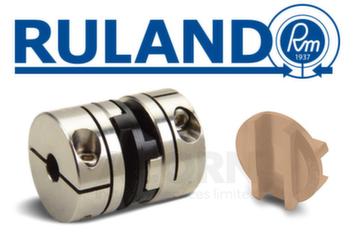At Acorn Industrial Services, we offer a comprehensive range of couplings and drives designed to meet the diverse needs of various industries.
From specifying a coupling for a new machine, to identifying coupling failure, our Dedicated Couplings and Drives Division experts can help you select the right coupling or drive for the job.











If you’d like to learn more about the different types of couplings, read our Everything You Need to Know About Couplings guide next.
Choosing the right coupling or drive for your application can be a complex task. At Acorn Industrial Services, we’re here to make that process easier for you. Here are some factors to consider:
Torque Requirements: Understanding the torque requirements of your application is crucial. This will help you choose a coupling that can handle the load without failure.
Shaft Sizes: The sizes of the shafts you’re connecting will influence the type of coupling or drive you need. Make sure to measure these accurately.
Alignment: Bad alignment can adversely affect a coupling’s performance. Choose a coupling that can accommodate any misalignment in your system.
Maintaining your couplings is key to ensuring their longevity and optimal performance. Here are some tips:
Regular Inspection: Regularly inspect your couplings for signs of wear and tear. This can help you identify and address issues before they lead to failure.
Understanding Common Issues: Familiarise yourself with common issues that can occur with your specific type of coupling. This can help you identify problems early and take corrective action.
Seeking Professional Help: If you’re unsure about a problem or how to fix it, don’t hesitate to seek professional help. Our experts at ACORN Industrial Services are always ready to assist.
At ACORN industrial services, our offer extends beyond just couplings & drives. We are committed to providing comprehensive solutions to your industrial needs including:



A coupling is a device used to connect two shafts together for the purpose of transmitting power/torque from one to the other.
A coupling transmits torque from one shaft to another, typically for the purpose of connecting a driving shaft to a driven shaft. It can also accommodate a degree of misalignment between the two shafts.
A coupling is needed to transmit power/torque from one component to another while allowing for some degree of misalignment or end movement. This can help reduce stress on the shafts and increase the lifespan of the machinery.
The leading cause of coupling wear is typically misalignment. This can cause excessive stress on the coupling, leading to premature wear. Other factors can include overloading, improper installation, and lack of maintenance.
Preventive measures of coupling failure include regular inspection for signs of wear ensuring proper alignment during installation, avoiding overloading, and performing regular maintenance.